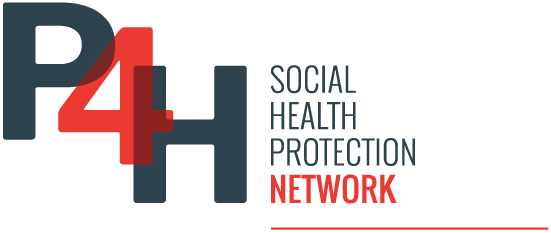Across the globe, health systems are being shaken on their foundations by the COVID-19 pandemic. By shedding light on risks or latent problems we were not aware of, the crisis constitutes a major test for our frameworks, the way we have structured our learning agendas, policy plans and action. COVID-19 and the financial crisis it triggered for the hospital sector invite us to look at health financing from the perspective of health facilities. The World Health Organization and the International Hospital Federation will partner to identify possible solutions that ensure the future of autonomous hospitals and their best contribution to the Universal Health Coverage (UHC) goal.
Authors: Bruno Meessen (WHO) and Eric de Roodenbeke (IHF)
Over the last decades, our collective understanding of health system financing has progressed a lot. Twenty years ago, we embraced the perspective of the steward of the health system and developed an extensive and detailed understanding of the core functions of any health financing system (revenue raising, pooling and purchasing). This framing has inspired, structured and supported action and reforms in many countries. Low-and-middle-income countries (LMICs) have for instance started to explore how to use the purchasing function to influence the performance of the providers. Shortly thereafter, we adopted the perspective of the households and understood that beyond the well-documented problem of financial access, there was the problem of catastrophic health care expenditure. Today, financial protection is monitored globally and is a key component of the Sustainable Development Goal on UHC.
Health facilities as ‘firms’
While we have dedicated a lot of attention on how the purchasing agencies could influence the behaviors of providers through payment methods, we have overlooked the fact that many health providers and other specialized actors (e.g. drug distributors, laboratories) are firms, i.e. autonomous organizations which are responsible for their own economic viability (we use this term in the broad sense of organizational economics: it also covers entities such as public autonomous hospitals or private non-for-profit health centers, for instance). This has direct implications in terms of health financing. Capital must be funded. As a reminder, capital goes beyond infrastructure and equipment, it also covers inventories and cashflow. Most of us working on health financing are not familiar with the mechanics of raising capital, monitoring its ‘burn rate’, following cashflow and addressing its shortage… We have assumed working capital as not problematic (maybe because a lot of our collective thinking focused on LMICs where governmental health facilities do not take loans and never default?). We have assumed health providers as ‘existing’ and never considered that their mere existence must be financed. Yet, this is also part of health financing.
These assumptions do not hold anymore. Worldwide, the COVID-19 crisis has put autonomous health facilities, and hospitals in particular, under unprecedented financial pressure. The American Hospital Association estimates that the financial losses for the first four months of the crisis to $202.6 billion for America’s hospitals. For some autonomous health facilities, the risk of insolvency is looming: because of a lack of cash (mainly stemming from the major reduction of revenue caused by the lockdown but also a surge in costs), they will be unable to pay back some money they owe: to their staff for the work done over the last month, to the social security for the insurance package for their employees, to their suppliers for some medical equipment or medicines, to the banks for loans they took for some heavy investment, etc.
To overcome the crisis, many health facilities will have to reduce their costs (e.g. fire personnel) or get a credit line from a bank, a rescheduling of their reimbursements by their creditors or an injection of funds by shareholders. Those which do not have enough assets to pay back their debts, will go bankrupt, with the possible outcome of a sale of assets and a full termination of activities. This is not just about under-capitalized small private clinics: before COVID, public hospitals in OECD countries were already in a critical financial situation with a heavy payroll, a general pattern of reduction in capital investment and increasing indebtedness. In France, for instance, the consolidated debt of public hospitals was already €30 billion. In LMICs, indebtedness was probably less an issue, but the economic model of many hospitals is also compromised by the drop in the utilization and the extra costs induced by the response.
We need to better understand the pre-existing conditions across settings, the implications of the current crisis and make sure that solutions will nicely fit under the broader agenda of hospitals fit for the UHC goal.
Early lessons
Across the globe, governments will not passively observe the meltdown of the hospital industry. They will come with rescue plans and probably, use them as policy instruments to accelerate the (sometimes much needed) transformation of the hospital sector. From a policy perspective, this will raise some specific issues across settings. In many LMICs, one issue is that the collaboration between health authorities and private providers has often been limited; there, mechanisms of engagement and platforms have still to be put in place. In high-income countries and many middle-income countries, much more than general governance, the issue will mainly be to develop technical solutions adapted to the already hybrid status of the hospital sector.
As illustrated by a recent analysis produced by Wilm Quentin from the European Observatory for Health Systems and Policies, this domain of action overlaps to some extent with provider payment systems (the crisis, for instance, questions the over-reliance of some national health systems on output-based financing models), but not fully. The issue right now is about handling the revenue shortfall entailed by the interruption of usual activities and its direct consequence on the cashflow of hospitals. This is the space for the new agenda for the health financing community.
Quentin reports that some responses have been innovative. “In Germany, a new law was approved at the end of March guaranteeing that hospitals receive per diem payments (€560 per day) for every empty bed until the end of September 2020. In Belgium, the federal authorities created a short-term cash advance to hospitals (of € 1 billion), amongst others to compensate for revenue losses. In Poland, hospitals in the public hospital network receive their usual monthly instalments despite considerably reduced activity, and hospitals outside of the network can apply to receive monthly instalments for contracted services under the assumption that these will be provided later during the year. In the Czech Republic, where hospitals continue to receive their regular monthly instalments, the question of revenue shortfalls will arise only at the end of the year, when the annual bill will be settled. In Switzerland, hospitals do not receive financial compensation for the loss of revenue resulting from the cancellation of elective admissions. However, hospitals can apply for bridging credits and short-time work compensation just as any other business entity in the country. If hospitals apply for short-time work, they can reduce their salary costs, and 80% of the difference between the current salary and the normal salary of their employees will be covered by the government.”
These different examples (from the specific context of Europe where autonomous hospitals are well-integrated into public health systems) are interesting. The example of Germany shows that provider payment mechanisms could be part of the solution. The case of Belgium suggests that the issue is maybe primarily responsiveness and dealing with the emergency (still, there will be need for some rules for fair sharing of the crisis fund). The case of the Czech Republic indicates that sometimes, the existing financing systems already have very fortunate features. The case of Switzerland indicates that a lot of the solutions could come from the large set of measures put in place for business in general.
Governments can indeed be very creative in designing schemes for supporting private business: postponing tax collection, reshaping accounting rules, subsiding or tax-exonerating some costs, etc. These schemes and solutions are not developed for the health sector, some could be more favorable to the latter than others. The health sector has indeed some specificities – the important share of manpower in the production function, the non-versatility of infrastructure… and more fundamentally the public mission.
In their dialogue with ministries of finance or other ministries (e.g. labor), ministries of health might also want to tailor the schemes on some specific objectives. In some countries, privatization of the hospital sector has taken some extreme forms over the last decades; national or local governments may want to reinvest the sector and take back some control. In nearly every country, there will be some strategic questions under the ‘Build back better’ agenda. Is it relevant to save, with public money, all hospitals in difficulty or should there be some criteria? Should some extra conditions be added (e.g. obligation to merge with another group or close some activities)? Should new rules be enforced (ex. obligation to report some health and economic data or mechanisms leading to a downward revision of prices)? These schemes will be key for the survival of many hospitals but could also be strategic for much better foundations for UHC…
The amount of questions is massive…
Ways forward
Over the last two decades, we have conceptually and empirically made huge progress in understanding how health financing arrangements can contribute to coverage, efficiency and equity. COVID-19 teaches us that we need to fast track our learning about the sustainability of our health systems.
We need to better understand health financing from the perspective of autonomous health facilities, and then, understanding this perspective, to embed this within an overall perspective of equity and efficiency in the health system.
At WHO and the International Hospital Federation, we believe that this agenda is not only urgent because of the current crisis but is also global and with long term relevance. Across regions, growing number of countries have indeed been subscribing to the agenda of greater health facility autonomy, also for their public sector. This raises several strategic questions. What is the desirable degree of financial autonomy in a specific context? What are the many implications of this global trend, also for emerging issues such as health security or societal inequality? How does this policy orientation fit within the agenda of building integrated provider network and of progressing towards the Sustainable Development Goal of UHC?
We wish to develop this learning agenda in a very inclusive and step-by-step manner. In the coming weeks, we will approach some stakeholders of relevance to map the issues and agree on possible first steps. We will start the conversation with national health service providers organizations affiliated to the International Hospital Federation, but any membership organization mandated to promote interests of autonomous hospitals can contact us. Documentation of the current crisis, and more positively, of the innovative responses developed by governments, insurance funds and hospitals themselves will be one of our priorities. We anticipate that the learning program will require transdisciplinary collaborations (hospital administration, business studies, tax and law…), if you have expertise in this area, do not hesitate to contact us. This will be a long journey full of learning for progressing towards our shared goal of “Health for All”.


